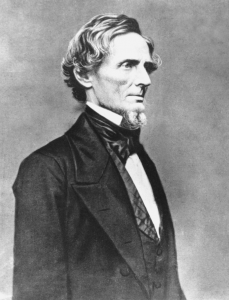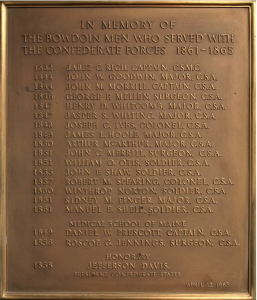
Figure 8. Portrait of Jefferson Davis (Encyclopædia Britannica).
Before his rise in the Confederacy, Jefferson Davis was a senator in Mississippi and a fierce advocate of Slavery (Figure 8). In 1858, Davis visited Portland, Maine and attended Bowdoin College’s 53rd Commencement. During this commencement, Davis was presented with an honorary Law degree. Bowdoin historians describe this as being a very uncomfortable decision considering that while the College did not believe in his ideology, it would have been a grave insult not to present a man of his status with a degree. When Jefferson Davis became head of the Confederacy, there was a lot of demand for Bowdoin to revoke Jefferson Davis’s degree. After much deliberation, the College decided not to revoke his honorary degree.
In 1962, the Daughters of the Confederacy requested for Bowdoin to put up a plaque commemorating the fallen soldiers of the Confederacy as well as honoring Jefferson Davis. Seeing that the organization would pay for the plaque, the College immediately got approval and put up the plaque in Memorial Hall (Figure 9). Based on the ideology differences in the civil war, many were outraged to find that Bowdoin College chose to commemorate those who fought in the Confederacy given that they were defending slavery. Others argued for the plaque stating that many of the nineteen individuals were doctors or they were just protecting their home state. Regardless, any defense for the plaque focused on the soldiers with very few people supporting the honor the plaque bestowed upon Jefferson Davis.

Figure 9. Confederate Plaque at Bowdoin College (Bowdoin College Special Archives).
In 2017, Bowdoin College voted to remove the plaque from Memorial Hall and relocate it to Special Archives in response to the riots occurring in Charlottesville over Confederate Monuments. In the press release, President Clayton Rose stated, “Critically, this move explicitly preserves and acknowledges our history, our unusual relationship with Davis, and the fact that there were those at the College who did not support the preservation of the Union or the causes of freedom and human dignity.” In place of the plaque, a panel was installed in Memorial Hall detailing the history of the plaque.
The removal of this commemorative monument demonstrates another form of Damnatio Memoriae with the College sanctioning how those tied to the Confederacy are remembered. By removing the soldiers and Jefferson Davis’s names from Memorial Hall, the College might seem to be trying to erase any ties with the Confederacy. However, like the other examples of memory sanction discussed, the goal of Damnatio Memoriae was never to erase a person’s memory, but rather to immortalize it with dishonor. By removing the plaque and replacing it with a panel detailing why the plaque was remove, Bowdoin is dishonoring Davis and the soldiers. They even chose to move the plaque to Special Archives instead of just destroying it. Rather than just getting rid of any trace of the confederacy, the College purposely left pieces of their presence so history would know that Bowdoin College thought they were unworthy and that they bestowed this dishonor upon them.
In this way, Bowdoin’s history with the Confederacy once again demonstrates how Damnatio Memoriae was never aimed towards erasure of a person from memory, but rather molding the narrative so the group or individual are forever remembered in the negative and dishonorable light their condemners intended for them.
References:
Bowdoin, et al. “Relocating the Jefferson Davis Plaque.” Bowdoin News Archive, community.bowdoin.edu/news/2017/08/relocating-the-jefferson-davis-plaque/.
